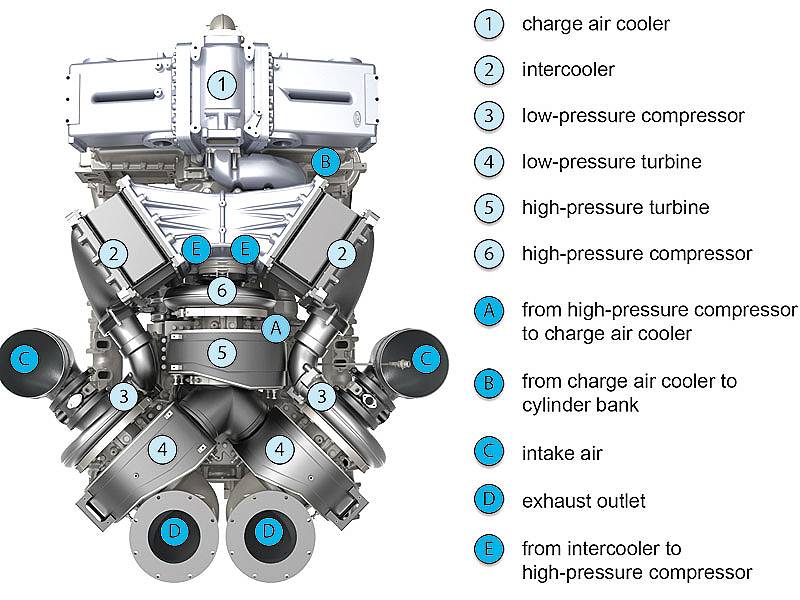
The automotive industry is undergoing a significant transformation as manufacturers seek to balance performance, fuel efficiency, and environmental responsibility. A predominant shift in recent years has been the adoption of turbocharged engines. Once considered a niche upgrade reserved for high-performance sports cars or diesel trucks, turbocharging has now become a mainstream technology in vehicles ranging from economy sedans to luxury SUVs. But why are automotive manufacturers offering more turbocharged vehicles and how will turbos be the solution for meeting market, government, and performance requirements?
One of the primary reasons turbocharged engines are becoming more common is their ability to offer improved fuel efficiency without sacrificing performance. Traditional naturally aspirated engines rely on larger displacement to provide adequate power, often resulting in lower fuel economy. In contrast, turbocharging allows manufacturers to reduce engine displacement while still providing the same or even increased power output. A turbocharger is a turbine-driven forced induction system that compresses intake air entering the engine, allowing more fuel to be burned with increased efficiency in a compact power plant. With rising fuel costs and stricter fuel economy regulations worldwide, turbocharged engines meet both consumer demand for efficiency and governmental emission requirements.
While global emissions regulations are becoming increasingly stringent, and automakers are feeling the pressure to reduce their vehicles’ carbon footprints. The European Union’s Euro 6d and the Corporate Average Fuel Economy (CAFE) standards in the USA are some of the regulations requiring car manufacturers to deliver more environmentally friendly vehicles. Turbocharged engines meet these regulations by providing improved efficiency, which in turn reduces CO2 emissions.
Turbocharged engines offer more than just efficiency; they quench our thirst for performance! By compressing air before it enters the engine, a turbo delivers a higher volume, denser air charge that when combusted, generates more power, resulting in a noticeable improvement in acceleration and overall performance. What does that mean for you? Adding a turbo means a more responsive vehicle without the need for a large displacement, less efficient engine. Turbocharged engines often deliver peak torque (the force that moves the vehicle) in broad power band which improves towing capability and driving excitement.
The versatility of turbochargers is also seen in applications that were once offered with larger six- or eight-cylinder engines and are now available with turbocharged four-cylinder engines, providing similar power with fewer compromises. This trend will likely continue as automakers aim to provide consumers with a broad range of engine options that suit their needs.
For manufacturers, turbocharging offers a low cost of entry to improve engine performance and efficiency without having to develop entirely new technologies. While electric powertrains and hybrid systems offer potential benefits, they also come with a higher cost and complexity. Turbocharged engines can be implemented relatively easily across a range of vehicles, including those at more affordable price points. Because they are cost effective, turbocharged vehicles are becoming more widely available across different market segments, including mainstream models that appeal to budget-conscious buyers.
The rise in popularity of turbocharged engines can be attributed to advancements in engine management systems, turbocharger design and technology, and the use of lighter, stronger materials. These innovations have made turbocharged engines more reliable and practical than ever, helping to expand their appeal to a broader buyer. As consumers continue to prioritize both performance and efficiency, turbocharging will remain a dominant technology in the automotive, industrial, commercial, and recreational markets.
While turbocharging is traditionally reserved for internal combustion engines, it is also compatible with the growing trend of electric vehicles. In fact, turbocharged engines can be run as hybrid systems to further enhance fuel efficiency and performance. Turbo-hybrid setups often pair a small turbocharged gasoline engine with an electric motor to provide additional torque and improve fuel economy and eliminate the need and hassle of finding a charging station. The hybrid approach allows manufacturers to maintain the convenience benefits of a turbocharged engine while improving the efficiency advantages with electric. As automakers develop more hybrid and electric vehicles, turbocharged engines will be at the forefront in optimizing performance and efficiency across a wide range of powertrains.
The versatility and efficiency of turbocharged powertrains is undeniable, and as consumer preferences shift toward smaller, more fuel-efficient engines while providing impressive performance, turbocharging is poised to gain popularity. Whether you're a performance enthusiast or simply looking for a more fuel-efficient ride, turbocharged vehicles are will become an even more dominant part of the automotive landscape for years to come.